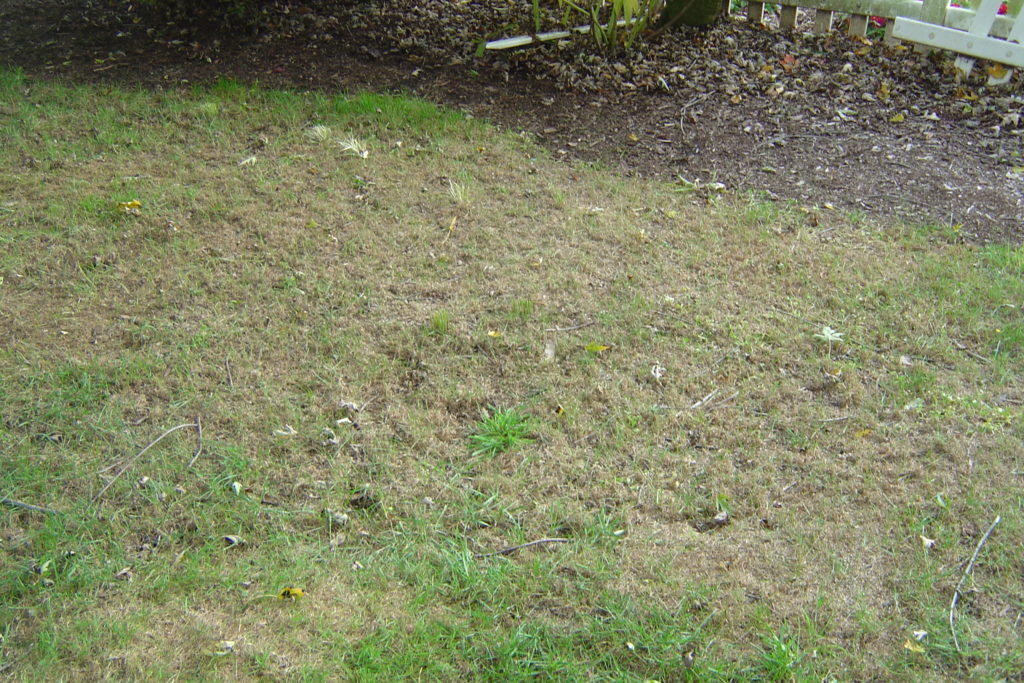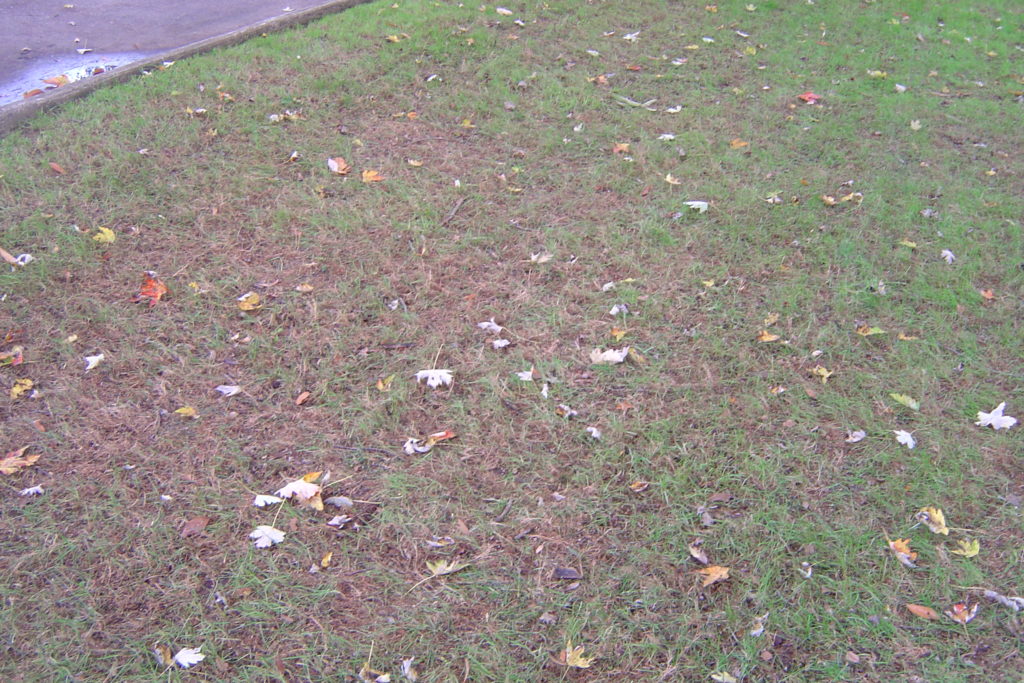Army worms have been a real problem this year. The warm front from the south can carry them 500 miles per day, keeping egg masses in 50 to 200 eggs, hatching in only 2-3 days, 2-3 weeks for the larva stage. Suddenly, moths were everywhere in August. Since then, the army worms have destroyed many fields of agricultural crops and lawns.
We sprayed here at the nursery in early August at the first sign of moths. Spraying malathion seemed to suppress the moths for awhile, Reducing their numbers. Then we used Eight in another application in the early stages. around mid September we were seeing a few moths around, so we applied an insecticide containing Dylox for quick kill overnight. The lawn was starting to get brown patches, we seeded over these areas. the new seed germinated, and we saw the army worms feeding on the new seedlings. recently, we noticed as we mowed the lawn, the patches were more prevalent. When the weather stays warm as it has this year, a second generation of army worms before winter. If we get early frosts and cold weather, this will helps rid us of them.















